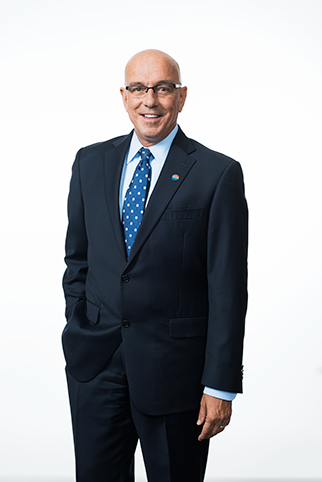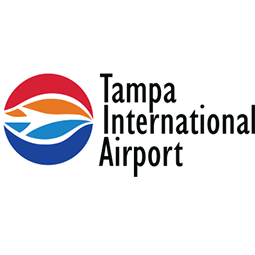Investor Spotlight: Tampa International Airport
March 22, 2018
If you’re a Tampa Bay resident and frequent flier, you’re likely a devoted fan of Tampa International Airport. CEO Joe Lopano and the TPA team have been working steadily for years to ensure that passengers have a greater access to more domestic and international destination, a hassle-free experience getting into and out of the airport, and excellent food, drink, and gift options at the airsides.
The airport team just celebrated a huge milestone in their expansion project with the opening of SkyConnect and the new Rental Car Center in February.
Joe Lopano shared his thoughts with us on how the new airport improvements will affect the customer experience, how local business growth has helped TPA win new routes, and what we can expect as progress on Phase 2 of the Master Plan heats up.
SkyConnect recently opened at Tampa International Airport. How does this impact the way people travel in and out of the airport? 
SkyConnect links the Main Terminal to our new Rental Car Center, which is located about 1.4 miles south of the terminal on the airport campus. It’s about a five-minute ride. It also makes a stop at the Economy Parking Garage, so those parkers now don’t have to take a bus to get to the terminal. They ride the people mover. The beauty of the system is that it removes 2.7 million vehicle trips from our roadways and curbsides every year, so our operations gain a lot of efficiencies. It also means people don’t have to cross a busy street to get to their rental cars.
We put kiosks where passengers can get boarding passes and check their bags in the SkyConnect station at the Rental Car Center. Those are customer service amenities that we are particularly proud of. They make the center so easy to use, and not just for rental car customers. Anyone can be dropped off at the rental car center, which is closer to the airport entrance than the main terminal.
We also moved our transit curb to the SkyConnect station. That new location for buses has enabled significantly more public transit service to the airport from across the Tampa Bay region. With the check-in right there, right next to the public transit, there’s truly a new way to access to the airport. I’m ever hopeful we will see a lot more of that throughout the Tampa Bay region.
Which new flight routes are you most excited about and why?
Well, that’s sort of like asking me to pick my favorite child! They’re all special and I love them all! Of course, one of our top priorities has been growing international traffic, and we’ve more than doubled that since 2011. We’ve launched service to Cuba, Switzerland, Panama, Germany and Iceland. But the other exciting story has been the expansion of service to our West Coast, with new flights to San Francisco, Seattle and San Diego.
We worked many years to connect San Diego and Tampa Bay, which is why we were so thrilled when Southwest launched daily nonstop flights between TPA and San Diego back in January. This route has a unique human element in that both of our markets have large military populations. To see family members board that flight to visit loved ones serving in San Diego, or to have military personnel arrive from San Diego to engage with our forces stationed at MacDill is incredibly special to our entire Airport team. Also, this flight has provided easy access for the Tampa Bay community to the many great aerospace and biotechnology firms that call San Diego home, and I expect we’ll see tremendous opportunities for business investment and growth for both regions as a result.
When working with airlines on air service development for the Tampa market, what are some of your go-to selling points for this region?
Historically, the Tampa Bay area has been known by airlines for its reliable supply of leisure travelers. Over the last two years we’ve started to shift the narrative to highlight the region’s strong business foundations as well. With that in mind, being able to point to the relocation of major employers such as Amgen, Bristol-Myers-Squibb and Johnson and Johnson to our region, or the growth of existing companies like Chase and TechData, has been hugely helpful in providing the data that supports our story of Tampa Bay’s strength as both a leisure and business community. We often point to the region’s above-average population growth as a barometer for economic activity in the region, and compared to the other major Florida airports, TPA has the largest share of local originating traffic. What this means for airlines is that when macroeconomic trends shift, there is always a strong base of Tampa residents to help ensure that flights will depart full or nearly full of passengers. That is a very compelling point to take to airlines when we make the case for new nonstop routes out of this region, because it helps reduce their start-up risk.
How is Phase 2 of the Master Plan development proceeding? What are some of the changes that travelers will experience when the first projects from this phase are completed?
With Phase 1 wrapping up, we’re going full steam ahead on Phase 2. We are in the procurement and design stage and expect to begin construction later this year. Phase 2 includes the addition of 16 new curbsides at the Main Terminal. Those will be Express Curbsides for passengers without checked bags. We think these curbs will be a huge hit with passengers looking to get in and out rapidly. It’s just another way we continue to focus on creating a great passenger experience. In addition to the curbsides, we’re also doing what’s essentially transit-oriented development around the SkyConnect station at the Rental Car Center. We expect to have a new office building ready for leasing in the next few years. We also expect to build at least one hotel, some retail space and a gas station around there. Construction on most of it should be done around 2023. But we’re already thinking about Phase 3, which is a 16-gate terminal. Like the rest of Tampa Bay, we’re growing quickly. We will probably serve a record number of passengers this year and lucky for the entire region, the airlines keep bringing in more flights. That means we need more gates.

